Debug
Start a debug session
To debug CoffeeScript, TypeScript, and Dart code, you need to generate a source map for it. This will set the correspondence between lines in your original code and in the generated JavaScript code. If no source map is generated, your breakpoints will not be recognized and processed correctly.
Define a run/debug configuration for the application to be debugged.
Create breakpoints.
Click the Debug <configuration_name> button
. Learn more from Starting the Debugger Session.
After you've started a debug session, the icon that marks the Debug tool window toggles to
![]() to indicate that the debug process is active.
to indicate that the debug process is active.
Debug
After you have configured a run configuration for your project, you can launch it in debug mode by pressing Shift+F9.
In the Debug tool window you can see the list of frames and threads with their states, variables and watches. When you select a frame, you see the variables corresponding to the selected frame.
Breakpoints
Customize breakpoint settings
To customize breakpoint settings, press Ctrl+Shift+F8. To see all breakpoints in the project (with additional settings), click More or press the same shortcut Ctrl+Shift+F8 again.
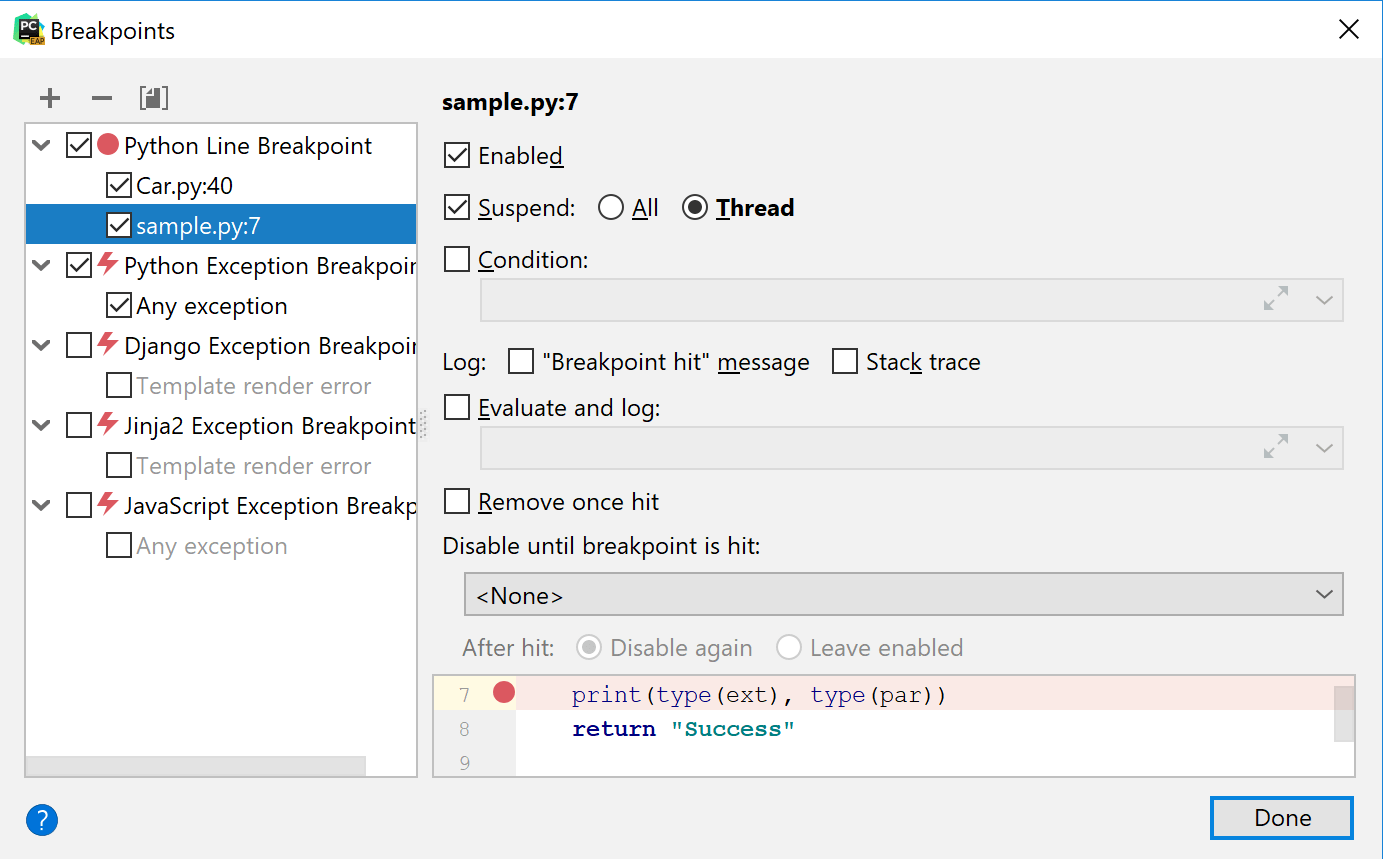
Do not suspend code execution
Use action breakpoints to evaluate a variable at a particular line of code without suspending code execution. To create an action breakpoint, click the gutter while pressing Shift.
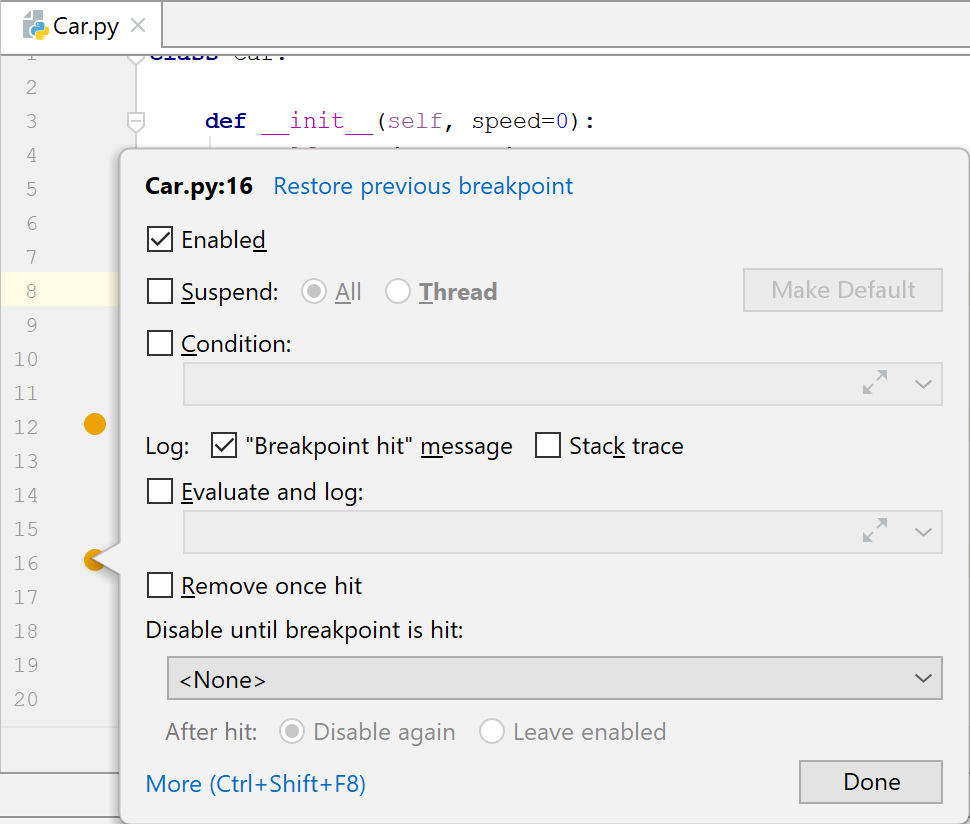
Create a temporary breakpoint
To create a breakpoint that stops only once, click the left gutter while holding Shift+Alt. For more information, refer to the section Breakpoints.
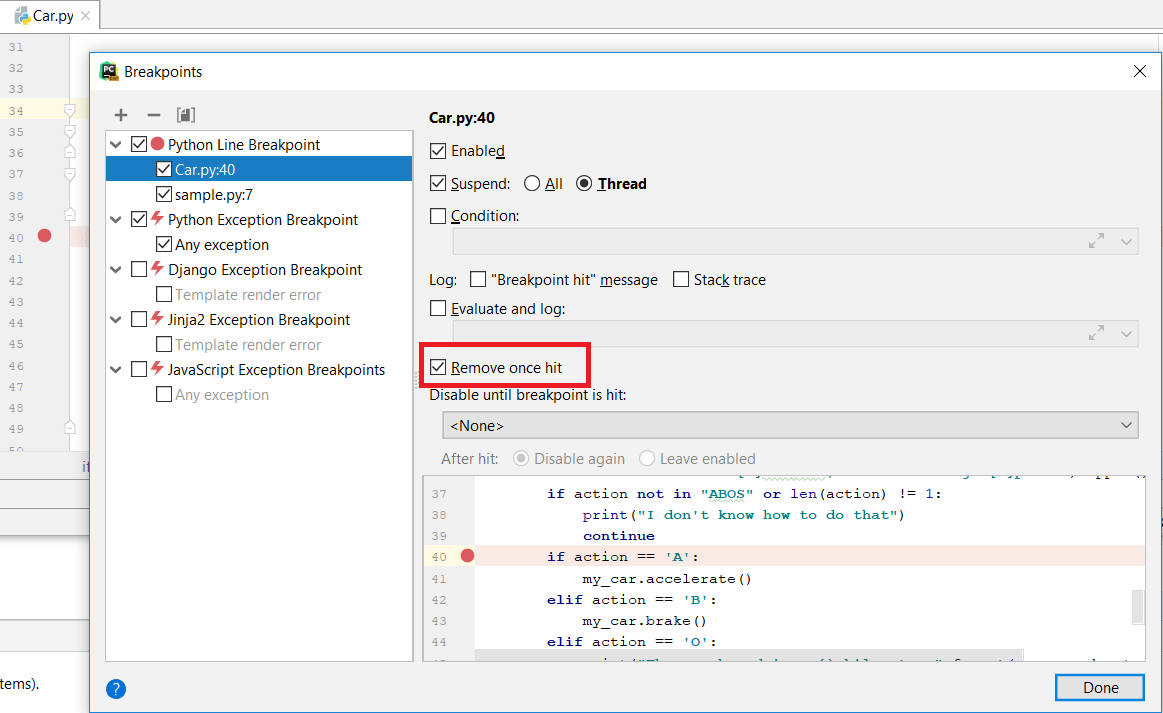
Disable breakpoints
To disable a breakpoint, click the breakpoint while pressing Alt. Refer to the section Breakpoints for details.

Debugger session
Smart step into
Sometimes it happens that you stay at a line and want to step into a particular method but not the first one that will be invoked. In this case use Smart step into by pressing Shift+F7 to choose a particular method.
Refer to the section Choosing a Method to Step Into for details.
Run to cursor
Create a breakpoint.
Run a debugging session. To run a debugging session, click the Run Application icon (
) in the gutter area and select Debug <configuration_name>.
To stop code execution at the cursor position without adding another breakpoint, click the Run to cursor icon () or press Alt+F9. Alternatively, you can click the line number in the gutter area.
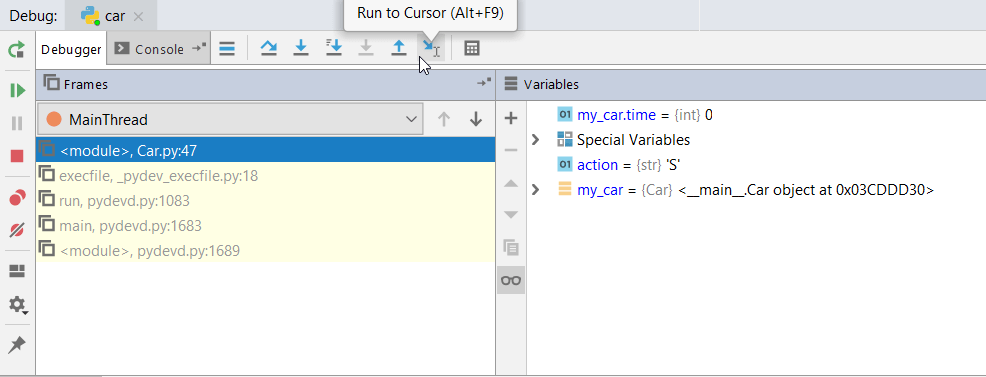
The icon is described in the toolbar reference of the Debug tool window.
Evaluate expression
In the debug mode, you can evaluate an expression by pressing Alt+F8.
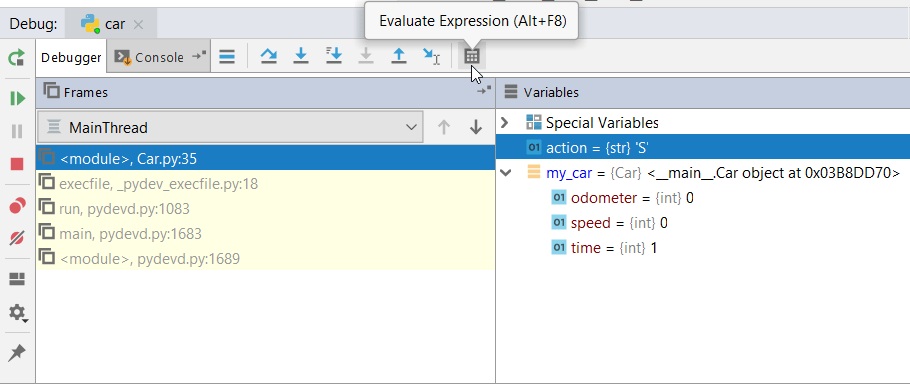
The Evaluate dialog supports code completion.
To see how the behavior of various function calls changes during your debugging session, set custom watches. You can read more about watches in Adding, editing and removing watches.
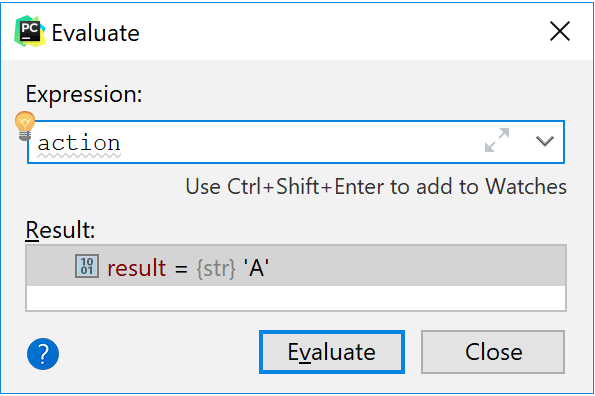
Refer to the section Evaluating Expressions for details.
Configuring debugger settings
To change debugger settings, click . In the Settings menu, click .
Useful debugger shortcuts
| Action | Hotkey |
|---|---|
| Toggle breakpoint | Ctrl+F8 |
| Resume program | F9 |
| Step over | F8 |
| Step into | F7 |
| Stop | Ctrl+F2 |
| View breakpoint details/all breakpoints | Ctrl+Shift+F8 |
| Debug code at caret | Shift+F9(within the main method), or Alt+Shift+F9 |